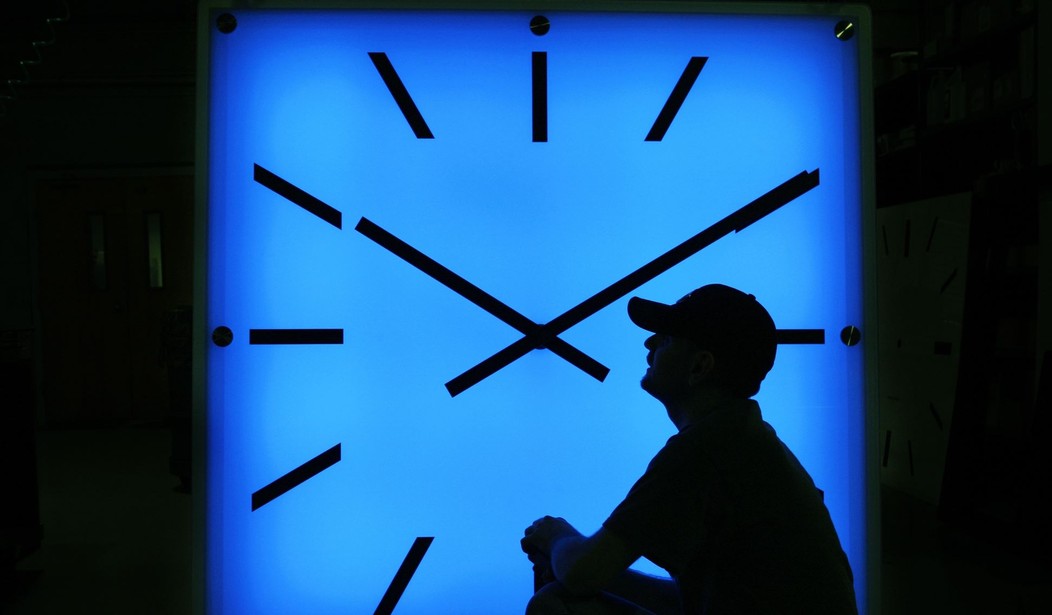Twice a year, Americans must change their clocks to adjust to standard or daylight-saving time. It is particularly painful in March to lose a precious hour of sleep, but the benefit is more sunlight in the evening hours.
To address this craziness, on Friday, U.S. Senator Ed Markey (D-MA) and U.S. Senator Marco Rubio (R-FL) reintroduced S.582, the “Sunshine Protection Act,” to make daylight-saving time permanent. In 2022, this bill to “lock the clock” passed the Senate but was stymied in the House of Representatives.
Rubio said the legislation would “end this stupid practice of changing our clocks back and forth.” According to Markey, “The antiquated biannual ritual of toggling between times isn’t just an inconvenience – it also has very real impacts on our economy, our energy consumption, and our health.”
A companion piece of legislation was also introduced in the House by U.S. Congressman Vern Buchanan (R-FL). He called the bi-annual clock adjustment “inconvenient,” “entirely unnecessary” and an “antiquated practice.”
Since 2015, 30 states have attempted to end the aggravating practice of clock changing. In 2022, Colorado passed a law allowing permanent daylight-saving time, but only if federal legislation allowed such a change.
How did this aggravating practice of changing our clocks every few months get started? During World War I, over one hundred years ago, it was created as a way for the United States to save power and fuel and enhance the economy by spurring consumer shopping in the evening.
Recommended
The practice was halted after World War I but was started again during World War II. The clock changing ritual became law in 1966 after the passage of the ‘Uniform Time Act.” This legislation allowed states to opt out of daylight-saving time, but not to abandon standard time.
Since then, two states, Arizona, and Hawaii, follow year-round standard time and do not have to change their clocks twice a year. Many Americans are rightly envious of their fellow citizens in these states who do not have to suffer through the “stupid” clock changing madness.
Sadly, the bi-annual clock adjustments have become an American tradition as we switch from standard time to daylight-saving time. The country will remain in daylight-saving time until the first Sunday of November when we “fall back” to standard time.
It has survived throughout the years despite intense opposition. In 2022, a CBS News/YouGov poll found that only 21% of Americans liked the current system of switching between standard time and daylight-saving time every few months. The poll found that 46% of Americans prefer year-round daylight-saving time, while 33%opted for standard time year-round.
This opposition is understandable as few Americans want to lose an hour of sleep. Americans already do not sleep enough, and the time change makes the sleep deficit even worse. It is also difficult for people to get their “body clocks” adjusted to the change. Experts note that the adjustment may take days, weeks or even months for some people.
It is much better to “fall back” in November and gain an hour of sleep versus “spring forward” and lose an hour of sleep in March. However, any change to our “body clocks,” can result in severe health problems.
According to Phyllis Zee, M.D. PhD., Chief of Sleep Medicine, Department of Neurology, Northwestern Medicine, transitioning to daylight-saving time is “associated with adverse health consequences.” Zee noted that “Off-kilter sleep can affect people's ability to multitask, stay alert and even maintain their balance, making them more prone to accidents.”
The negative health consequences were verified in a 2008 study conducted by the New England Journal of Medicine, which identified an increase in heart attacks in the three days following the implementation of daylight-saving time. Other health issues include a 6% increase in fatal car accidents, an 8% increase in strokes, and an 11% rise in “depressive episodes.”
In 2009, a study was done by researchers at Michigan State University for the Journal of Applied Psychology. It noted that daylight-saving time also led to added workplace injuries.
The arguments for permanent daylight-saving time include more sunlight hours in the evening, allowing for increased exercise and entertainment activities. Those who prefer year-round standard time like the daylight in the early morning hours, especially for those families with young children in school.
In addition, permanent standard time would align our schedule with the “sun’s day and night cycle.” Dr. Zee believes, “If we adopt permanent standard time, our internal clocks will more likely be in sync with the rotation of the Earth, seasonal changes and the sun clock.”
Either standard or daylight-saving time should be made permanent because interrupting our sleep schedules is both unnecessary and harmful to our health.
However, the last time the country experimented with permanent daylight-saving time, it was cut short. In 1974, Congress voted to end permanent daylight-saving time because of concerns from parents that traffic accidents would increase in the early morning hours as young drivers commuted to school in the dark.
Since then, the mood of the country has clearly changed as approximately 450 bills have been introduced in state legislatures to switch to permanent daylight-saving time if Congress passes a bill allowing such a change. This issue also has the support of President Trump. In 2019, he tweeted, “Making Daylight Saving Time permanent is O.K. with me!”
It is now incumbent on the American people to contact their member of Congress and demand support for the “Sunshine Protection Act.” Hopefully, this bill, with the strong endorsements of the American people, will pass Congress.
Thereafter, it will move to the President Joe Biden’s desk, where it will need to be signed before becoming law. Currently, Biden has not announced a position on the legislation.
It is time for common sense to prevail and for this legislation to become the law in our country. This is a rare issue that can unite an overwhelming majority of Americans, but to succeed, we need to make our voices heard on Capitol Hill.

























Join the conversation as a VIP Member